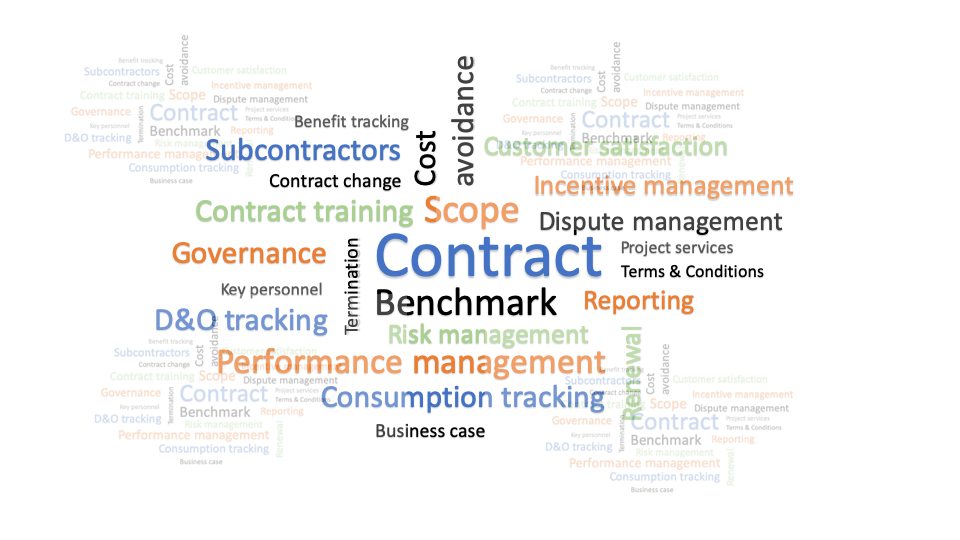Ask anyone what they consider to be an important aspect of IT and I doubt that they will name commercial & contract management in their top 3 answers. Most people will think about service quality, data protection, security, reliability, innovation or similar directly related aspects of IT. Most don’t even know what commercial & contract management represents (a.k.a. Partner management or Supplier management) and confuse it with the procurement or supply chain management departments.
For a moment, let’s consider the evolution of outsourcing in Western Europe and the U.S. over the past 20 years. Many IT Service organizations grew tremendously in the 90’s and 00’s through monolithic outsourcing. Contracts were often extensive statements of work with a 5+ year duration, specifying a long list of activities that few people understood. By the turn of the century, it became clear that such contracts needed to be managed effectively and that their management does not fit the classical procurement process, designed primarily to initiate and renegotiate contracts. Organizations such as IACCM were born in this period, professionalizing the practice of commercial & contract management.
As the pace of change in technology and IT Services increased, so did outsourcing. Functional descriptions, or deliverable based contracts largely replaced the traditional Statements of Work. With an increasing diversity in technology, multi-source solutions emerged, requiring the introduction of the service integrator function. A mix of sub-contractor (hired by the primary outsourcer) and 3rd party suppliers became problematic to manage, potentially leading to multiple layers of service integration/aggregation. Whilst day to day operational performance received a lot of focus to keep things running, the management of the multitude of underlying contracts also became more problematic. Any change in business process now meant a potential change to contracts spanning multiple suppliers.
Whilst the scarcity of IT resources in the market, combined with the need for IT savvy partners continues to drive outsourcing in 2020, most organizations now choose to adopt a progressive multi-source policy that brings new challenges. Even though most IT Services suppliers now offer an advanced Service Integrator function (SIAM) to help manage the increasingly multi-sourced environment, this concept is pushed to its limits. Where SI’s/SIAM traditionally attempted to harmonize standards, policies and procedures across a chain delivering an end-to-end service, businesses now expect a level of competitive brokerage to be incorporated and managed simultaneously (e.g. switching between underpinning cloud solutions within a business process or having the ability to choose from a catalogue of different suppliers to satisfy a new project based demand needs to be an option).
Consider now how the above will impact the underlying contractual agreements that are necessary to facilitate this new model of continuous competitive multi-sourcing. All contracts need full flexibility (no guaranteed volumes, no valid term of service, etc.), performance KPI’s need to satisfy the chain that they support and a governance framework that provides insights on and steering of the multitude of suppliers is required. Where a contract management department typically needed to manage 3 to 5 suppliers in the 90’s, this has expanded to a situation where it has become common to have 30 to 40 IT suppliers delivering components of IT Services in the chain of the business process.
If you have been fortunate to partner with IT suppliers who respond with agility at every request, are self-motivated to collaborate with each other and who’s core concern is to innovate and enhance your business, continually driving down cost and increasing performance, please share this wisdom. If however, you already struggle to manage your suppliers and intend to further embrace the increasing variety of IT services on the market, you may want to consider fortifying your commercial and contract management organization.
For the sake of clarity, commercial and contract management is not the procurement-, legal-, or service management- department. This team interfaces with all of the above in order to ensure that outsource agreements can be managed effectively and efficiently throughout their lifecycle.
As always, I am interested to hear your views on this subject and available to discuss further.

